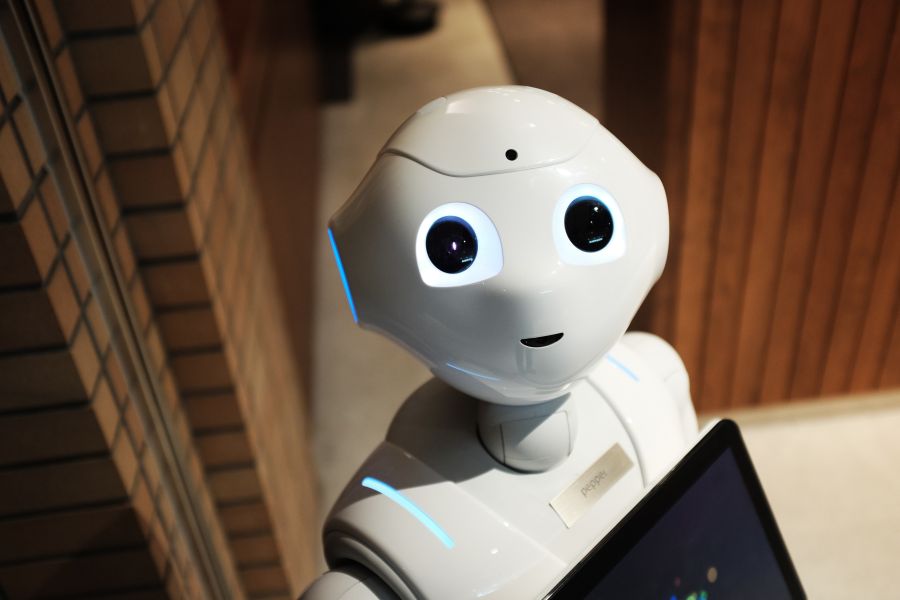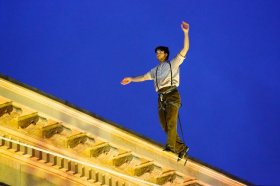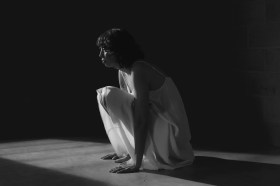Over the past few weeks, the AI conversation feels as if it has reached fever pitch.
How worried should we be when Google’s CEO Sundar Pichai admits that AI is currently keeping him up at night, and that big tech ‘does not have all the answers yet’ on how and why AI achieves its results?
What about when hundreds of expert tech leaders sign an open letter calling for at least a six-month halt to all AI’s development spurred by their mutual concern for the future of humanity?
What are we to make of the oncoming deluge of machine-created content that has the potential to supersede some of our most cherished human capacities?
It’s hard to know exactly what to feel about these new realities, but one thing is clear: we are at the dawn of a radical new era.
How are artists responding to AI?
According to countless tech sector experts, AI’s effects are already global and will cause varying degrees of change in every sector and workforce in coming years.
Looking specifically at the art world, it seems artists have been quick off the mark to express how they see AI influencing their craft.
Some have been protesting vociferously against what they see as the loss of their moral and Intellectual Property rights when online images of their work are swallowed up in the web trawls that AI systems routinely carry out to collate their ‘stock’ AI imagery.
Others are already finding ways to critique the professional creative use of AI tools by making punk/prank artworks to show the world how dangerous these technologies can be in mirroring what we assumed would forever be the irreplaceable hand of the artist.
A good example is German artist Boris Eldagsen’s recent entry to the Sony World Photography Awards (held last week). While Eldagsen was transparent with the competition organisers in divulging in his application that his photographic work entry had been co-created with AI, after he won first prize, he went public to say that the piece was in fact entirely created with AI and was a stunt to expose the ignorance of the art world to AI’s powers. The two parties now appear to be in an acrimonious war of words over the legitimacy of the artist’s actions in this case.
Controversies like these are sure to surface again in this new AI world, but it’s important they don’t overshadow another hugely important part of this new landscape – and that’s about the creative ownership of AI-generated artworks.
AI art copyright claims already underway
So far there have been a number of artists and companies who have taken issue with AI companies’ deep reach into image creation, and they are currently pursuing legal action for what they see as AI’s copyright infringement of their work.
Possibly the highest profile case is being led by US-based Joseph Saveri Law Firm and lawyer Matthew Butterick against AI software companies Stability AI, Midjourney and DeviantArt, for their use of Stable Diffusion, as ‘a 21st century collage tool that remixes the copyrighted works of millions of artists’.
The legal team is acting on behalf of artist plaintiffs Sarah Andersen, Kelly McKernan and Karla Ortiz, who claim Stability AI’s software is using their original works without their permission and is profiting from those breaches of copyright.
Read: How AI art benefits from a human touch
In pursing this class action, Andersen, McKernan and Ortiz see themselves as representatives of thousands of artists, who, just like them, have now completely lost control of how and where their art is used thanks to these AI programs. (Andersen has recently documented her experiences with AI technology in a guest essay for the New York Times).
Another big legal case now before the US courts is a lawsuit brought by Getty Images, which is also suing software company Stability AI for what it claims is the illegal reproduction of 12 million photo images from its database without permission or compensation.
The Getty Images case was filed in January this year and has since attracted a lot of legal attention, with experts weighing in with their predictions on what is essentially uncharted legal waters. (Many commentators speculate that Getty Images has a strong case, but that fair use laws may also prove a get-out clause for the defendant).
Copyright rules for AI-assisted art (so far)
On the back of this mounting interest in AI copyright law, one of the big questions that arises for Australian artists is: what are the copyright implications for your work if you make it with the help of AI?
Aditya Vasudevan is a solicitor with the Arts Law Centre of Australia and says the increasing accessibility of AI technology does indeed raise some big legal questions for artists, but he admits those questions are yet to be tested within the Australian legal system.
‘Until there is a legal case in Australia that involves an artist and AI technology, this is an untested area of the law,’ he tells ArtsHub.
‘It’s interesting to see those cases happening in the US,’ he continues. ’But Australian creatives must be mindful that our laws are different to those in the US or other jurisdictions, so similar cases may play out differently here than in those other countries.’
For example, Vasudevan explains that the US’s ‘fair use’ laws (that may play a role in the Getty Images lawsuit) are quite different from Australia’s ‘fair dealing exceptions’.
‘The US’s fair use laws are broad compared to Australia’s fair dealings laws, and the specific Australian exceptions for things like parody and satire, reporting the news, and criticism and review may not apply to protect AI companies and users of AI,’ he says.
As far as artists’ rights over their original works created using AI technology, Vasudevan suggests that in the case of legal action over the copyright ownership of a particular AI artwork, the Australian courts are likely to look closely at the level of independent effort put in on the part of the artist, as compared to the effort of the AI software, in deciding on its copyright ownership.
Read: Why ideas are worthless in copyright terms
‘I think the way it could play out is that the courts may ask questions like, “has the artist used a third party-designed piece of software to generate that image or have they used a program they developed themselves?”
‘And, “has the artist taken that AI-generated image wholesale and called it their own work? Or have they further manipulated and added other [non-AI generated] elements to it before they call it their own work?”
‘Obviously the more independent effort by the artist that is shown to have been put in to the creation of the work – as opposed to the efforts put in by the AI software – that will influence how readily or not it will be considered the artist’s own work,’ Vasudevan explains.
In the meantime, there are plenty of opportunities to see AI-generated images in action online (who hasn’t yet seen the AI pope in a puffer jacket?). But in most cases, these creators are not claiming to be artists, nor do they see their images as art.
But it’s a safe bet that there are plenty of talented real-life human artists who are currently working on new projects and creating new works that respond to this new phenomena. (Let’s just hope they can retain rightful copyright over those new works!)





